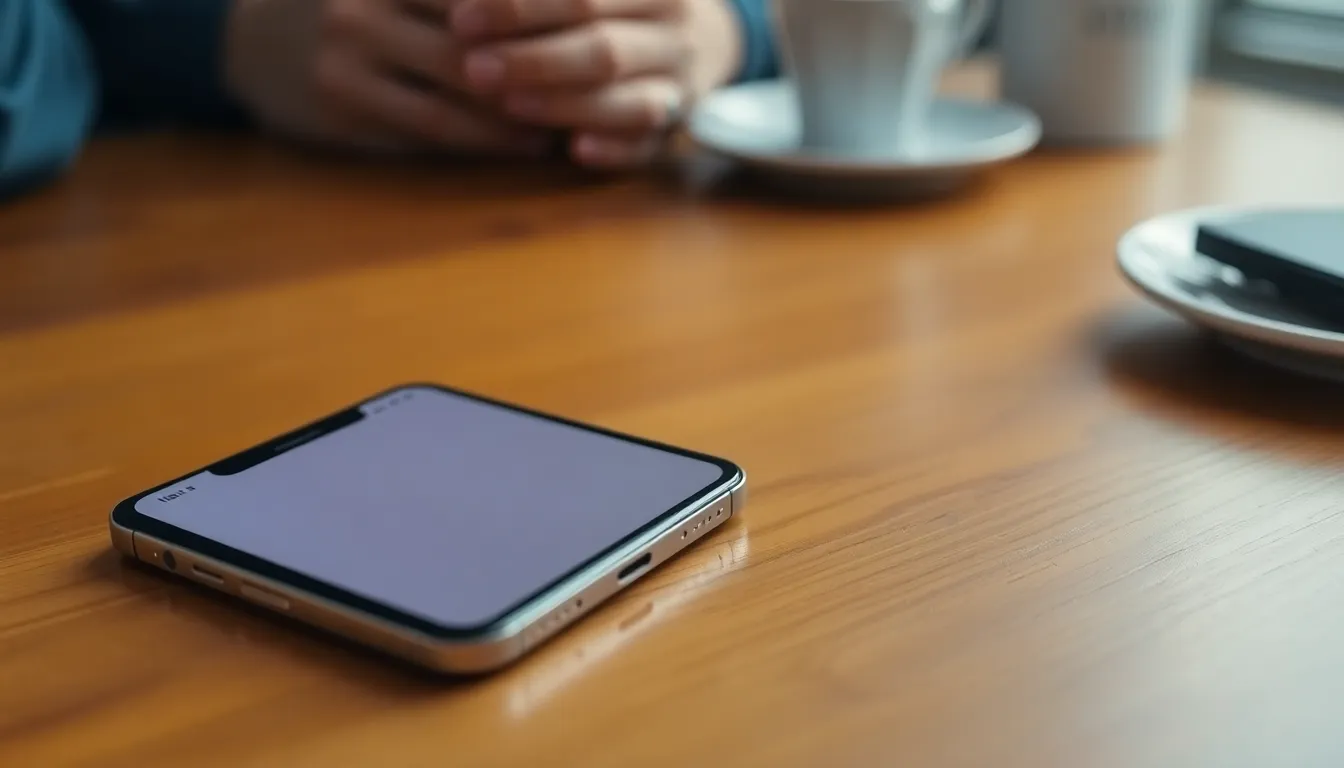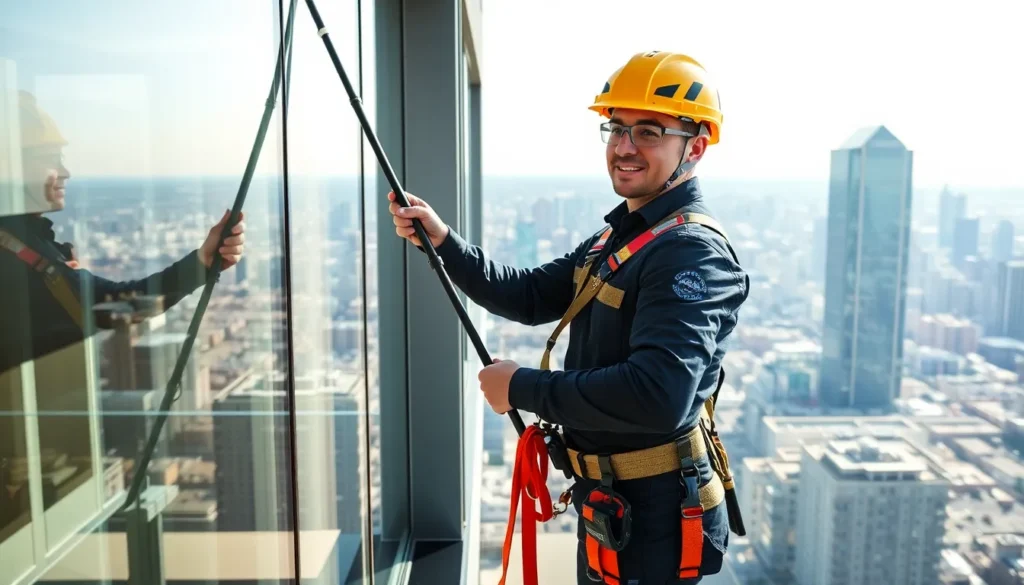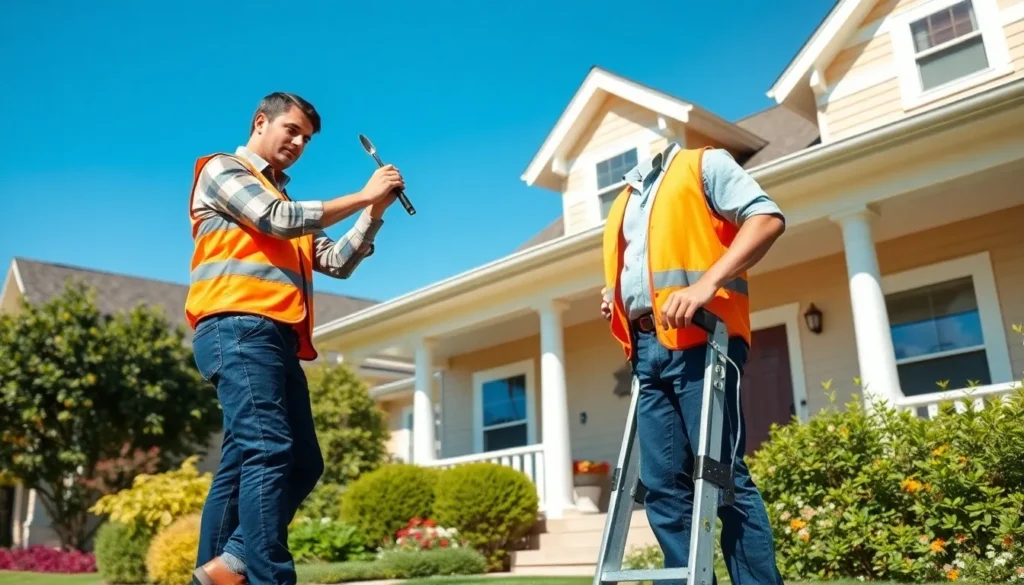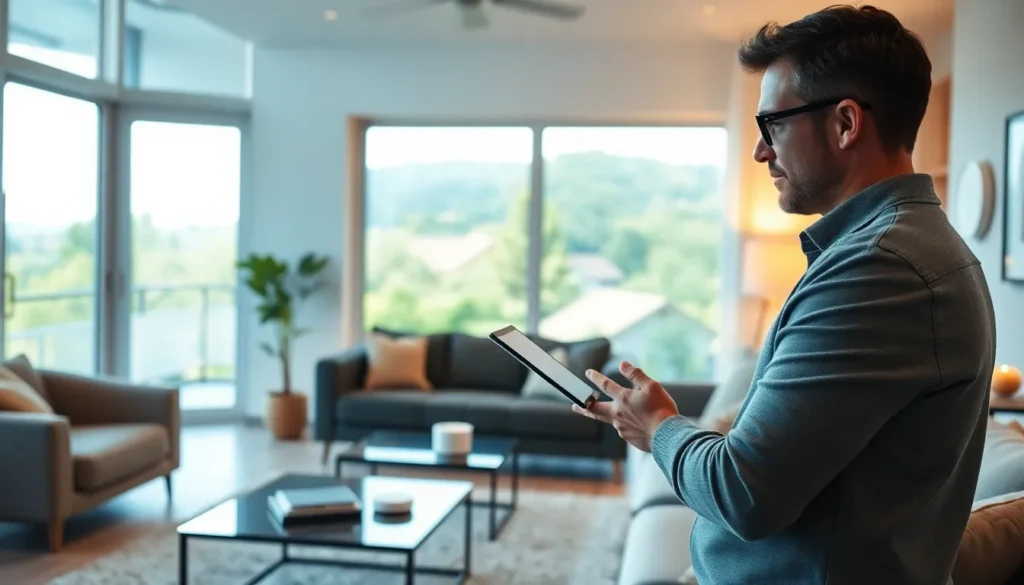Is that pesky grey bar at the bottom of your iPhone home screen driving you up the wall? You’re not alone! Many users find this uninvited guest a bit of an eyesore, cramping their style and stealing the spotlight from their carefully curated apps. It’s like that one friend who insists on photobombing every picture—annoying but fixable!
Table of Contents
ToggleUnderstanding the Grey Bar Issue
Users often encounter a grey bar at the bottom of their iPhone home screen. This grey bar can disrupt visual appeal and functionality.
Common Reasons for the Grey Bar
Several factors contribute to the appearance of the grey bar. System updates frequently cause glitches that trigger this issue. Additionally, users may experience it when using specific apps that don’t fully support iOS features. Another common reason involves accessibility settings, particularly when VoiceOver is enabled. Furthermore, low storage can impact the device’s performance, leading to display anomalies like the grey bar.
Impact on User Experience
The grey bar affects user experience considerably. It can distract from the overall aesthetic of the home screen. Distractions often lead to frustration, especially when trying to focus on other apps or content. Users may find their typical workflow interrupted due to this visual annoyance. Some individuals may perceive the grey bar as a sign of technical issues, leading to increased anxiety about device performance. Efforts to fix the issue demonstrate users’ desire for a seamless and visually appealing experience.
Methods to Remove the Grey Bar

Several methods exist for removing the grey bar at the bottom of the iPhone home screen. These include simple troubleshooting steps and adjustments.
Restarting Your iPhone
Restarting the iPhone often solves minor glitches. Users can achieve this by holding down the power button until prompted to slide to power off. Upon turning the device back on, it may resolve display issues, including the grey bar.
Updating iOS
Updating the iOS version is another effective method. Apple frequently releases updates that fix bugs or system-related issues. Users should check for updates by navigating to Settings, selecting General, and tapping Software Update. Installing the latest iOS version frequently eliminates display problems like the grey bar.
Resetting Home Screen Layout
Resetting the home screen layout provides another solution. This option restores the default layout of app icons while potentially removing the grey bar. To reset, users must go to Settings, select General, tap Transfer or Reset iPhone, and then choose Reset Home Screen Layout. This process can resolve issues stemming from app misconfiguration.
Advanced Solutions
Advanced strategies exist for removing the grey bar at the bottom of the iPhone home screen. Users can employ accessibility settings and consider a factory reset if necessary.
Using Accessibility Settings
Adjusting accessibility settings often provides immediate relief. Turning off features like VoiceOver can eliminate the grey bar in many cases. Users should navigate to Settings, then Accessibility, and check VoiceOver; disabling it often resolves display issues. Other settings related to display adjustments can also influence the appearance of the grey bar. Enabling and disabling these options may refresh the interface, leading to a clearer home screen.
Factory Reset as a Last Resort
Considering a factory reset offers a more drastic solution. This action restores the iPhone to original settings, potentially eradicating persistent glitches. Before proceeding, backing up data is crucial, ensuring no important information is lost. Users can access this option under Settings, choosing General, and then Transfer or Reset iPhone. A factory reset should only be attempted when other troubleshooting methods fail to resolve the grey bar issue. By employing this method, users often achieve a completely fresh start.
Tips for Prevention
Preventing the appearance of the grey bar on the iPhone home screen involves a few proactive measures. Regular maintenance ensures a smoother experience.
Regular Software Updates
Staying current with software updates plays a critical role in enhancing performance. Each new iOS version includes bug fixes and stability improvements. Users should check for updates in the Settings app under General, then tap Software Update. Enabling automatic updates ensures devices always have the latest features and fixes. Ignoring these updates may lead to glitches that result in the grey bar. Regularly updating not only improves security but also optimizes overall functionality.
Avoiding Blocked Apps
Using fully supported apps can significantly reduce the risk of interface issues. Some apps may not be optimized for the latest iOS features, leading to conflicts that trigger the grey bar’s appearance. Users should prefer apps from reputable developers that regularly receive updates. Checking the App Store for reviews and information regarding compatibility helps identify potential problem apps. If a specific app consistently causes issues, considering alternatives is advisable. Maintenance of app compatibility ensures a more seamless and visually appealing home screen.
Eliminating the grey bar at the bottom of the iPhone home screen is essential for a more enjoyable user experience. By following the outlined methods users can tackle this issue effectively. From simple restarts and software updates to more advanced adjustments in accessibility settings users have various options available.
Staying proactive with regular updates and using compatible apps can help prevent the grey bar from reappearing. With these strategies in hand users can enhance both the functionality and aesthetics of their iPhones, ensuring a smoother and more visually appealing interaction every time they unlock their devices.









